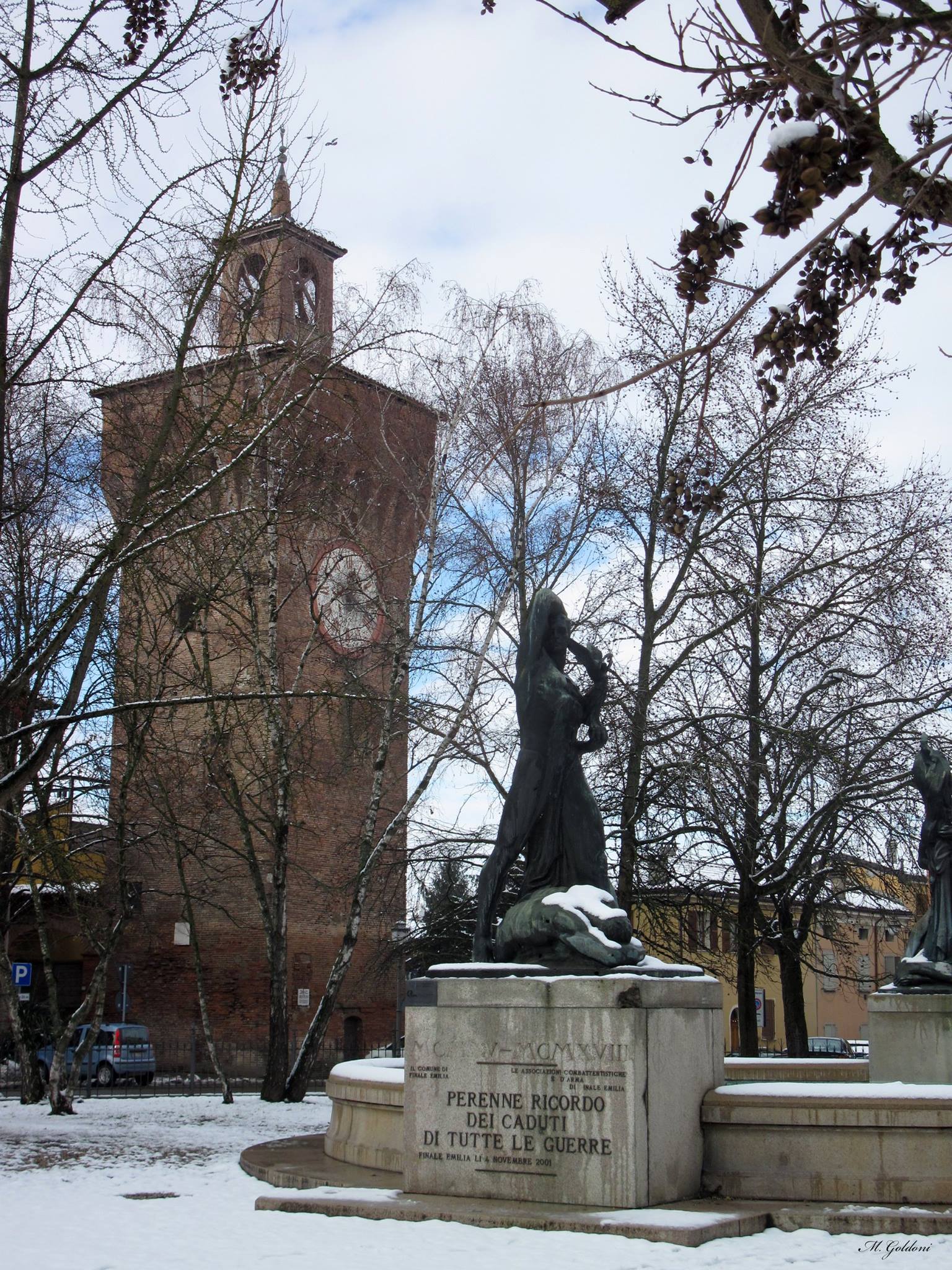Torre dei Modenesi

La torre è divenuta, con il suo orologio spezzato, il simbolo del terremoto che il 20 maggio 2012 ha colpito la bassa modenese. Dichiarata monumento nazionale alla fine dell’Ottocento, la torre rappresentava, insieme ai resti delle mura che la fiancheggiano, la testimonianza più antica del Finale medioevale. Alta 31,94 metri, la sua base è interrata vari metri sotto al livello stradale. La parte visibile aveva elementi quattrocenteschi, ma l’origine della torre risale al 1213, anno in cui fu costruita dal Comune di Modena, che le diede il suo nome (Torre dei Modenesi) e che contribuì a ripararla nel 1310 dai danni subiti nel corso di una guerra tra Guelfi e Ghibellini. Nel primo Cinquecento, la famiglia Magni ottenne l’investitura di poter abitare nella torre dietro pagamento di un livello annuo, così che la torre fu detta dei Magni sino al 1526, quando vi venne trasferito un orologio che si trovava su un’altra torre vicina pericolante e in seguito abbattuta. In quello stesso anno vi fu costruito un torresino che ospitava la campana e da allora in poi venne chiamata Torre dell’Orologio. Alla famiglia Magni subentrò in seguito quella degli Ascari, i quali nel 1756 rifiutarono di pagare il livello (due libbre annue di cera) né vollero addossarsi le spese di un restauro ormai indispensabile, pertanto la Serenissima Camera Estense decise di vendere la torre al Comune del Finale, che l’acquistò per 400 lire. Nel corso dell’ultima guerra, il torresino fu colpito da una granata che danneggiò anche la campana. Nel 1949 furono riparate le strutture murarie e lignee della cella campanaria, quindi nel 1981 alcuni volontari rimisero la banderuola con lo stemma del Comune sul pinnacolo del torresino, ridipinsero il quadrante e ripararono il vecchio orologio.
foto TORRE DEI MODENESI: Come era prima del sisma. Fotografia di Maurizio Goldoni

With its broken clock, the tower has become a symbol of the earthquake that struck the lower Modena area on May 20, 2012. Declared a national monument at the end of the 19th century, the tower, together with the remains of the walls that flank it, represented the oldest evidence of medieval Finale. Standing 31.94 meters tall, its base is buried several meters below street level. The visible part had 15th-century elements, but the tower's origins date back to 1213, when it was built by the Municipality of Modena, which gave it its name (Torre dei Modenesi) and helped to repair it in 1310 from the damage suffered during a war between the Guelphs and Ghibellines. In the early 16th century, the Magni family obtained the right to live in the tower in exchange for an annual payment, so that the tower was called Torre dei Magni until 1526, when a clock that had been located on another nearby tower, which was unsafe and later demolished, was moved there. In the same year, a small tower was built to house the bell, and from then on it was called the Clock Tower. The Magni family was later succeeded by the Ascari family, who in 1756 refused to pay the annual fee (two pounds of wax) or to bear the costs of a now indispensable restoration, so the Serenissima Camera Estense decided to sell the tower to the Municipality of Finale, which purchased it for 400 lire. During the last war, the tower was hit by a grenade that It also damaged the bell. In 1949, the masonry and wooden structures of the belfry were repaired, then in 1981, volunteers replaced the weather vane bearing the municipal coat of arms on the pinnacle of the tower, repainted the clock face, and repaired the old clock.
photo TORRE DEI MODENESI: As it was before the earthquake. Photograph by Maurizio Goldoni
